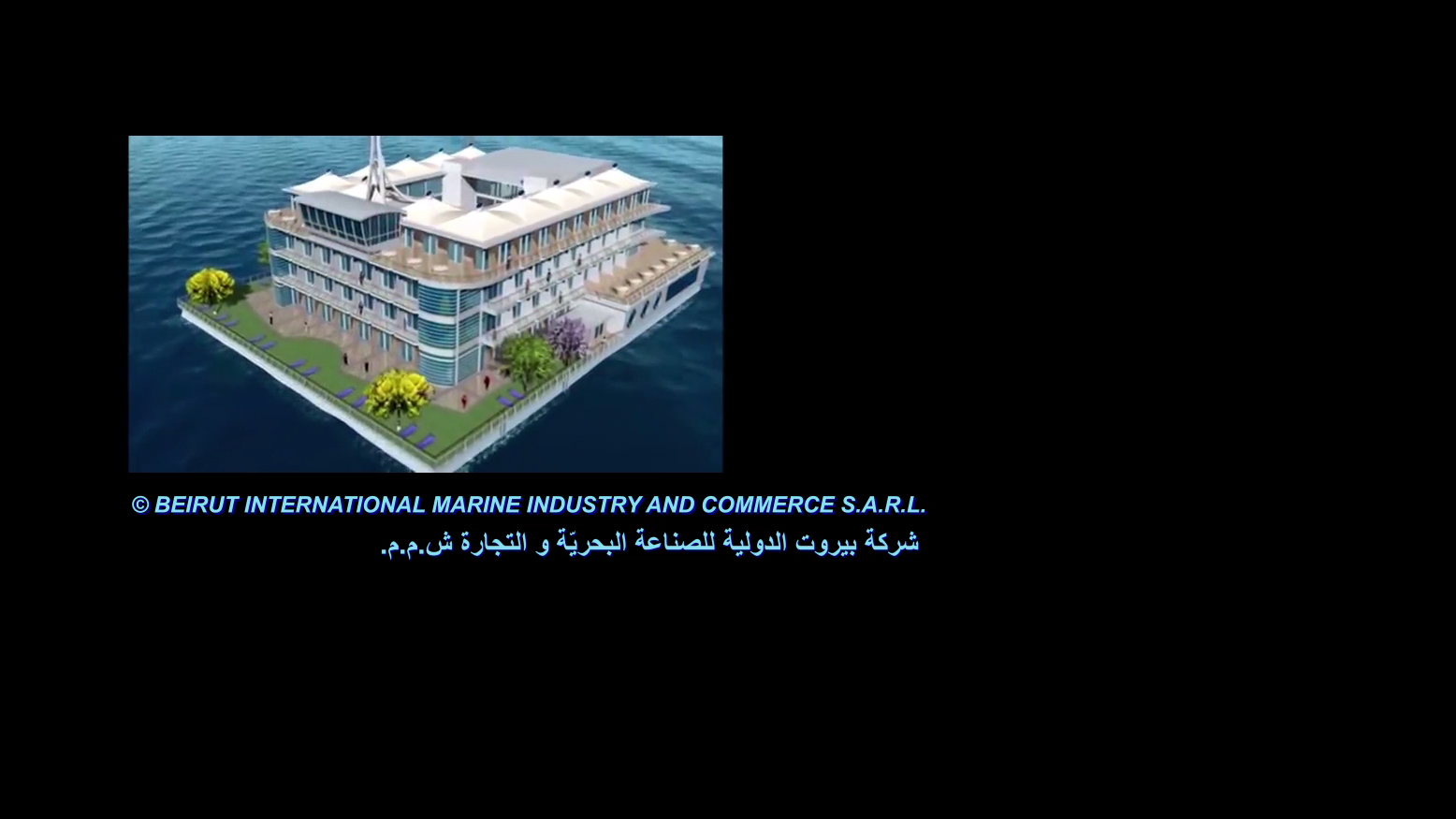In August 2017, Lebanon looks with mixed feeling at a giant statue of Saint Charbel as it is transported and erected on the highest mountaintop in Faraya. The project’s contracting company, Beirut International Marine INDUSTRY and Commerce S.A.R.L, is otherwise known for its techno-industrial feats in the field of marine engineering and for plans to build the “first floating island in the middle east.”
The video (14 mins.) interlaces the footage of the statue with found footage of the never-realized floating island, insisting on their co-constitution. Both projects present themselves as superlatives in relation to territory (largest in the world, first in the Middle East), and encapsulate collective ethno-nationalist ambitions within monumental architectural endeavors. Extracts from an existing lawsuit filed by the commissioner of the statue against BIMIC are interspersed throughout, where legal parlance attempts to align the defendant with the higher spiritual dimensions of the statue’s subject.
Through voice-over, the collective act of gazing at the statue as it is erected on August 25th, 2017 is tied to another collective act of gazing that usually takes place during eclipse viewings, but in particular to the solar eclipse that occurred in that same week in August in North America. The video borrows tactics from anthropological and contemplative cinema to accompany the ascent of the statue, and interrupts it with textual, archival, and promotional material. The title is lifted from a Levantine Christian hymn where Jesus likens himself to a grain of wheat to assure disciples of an imminent return.






